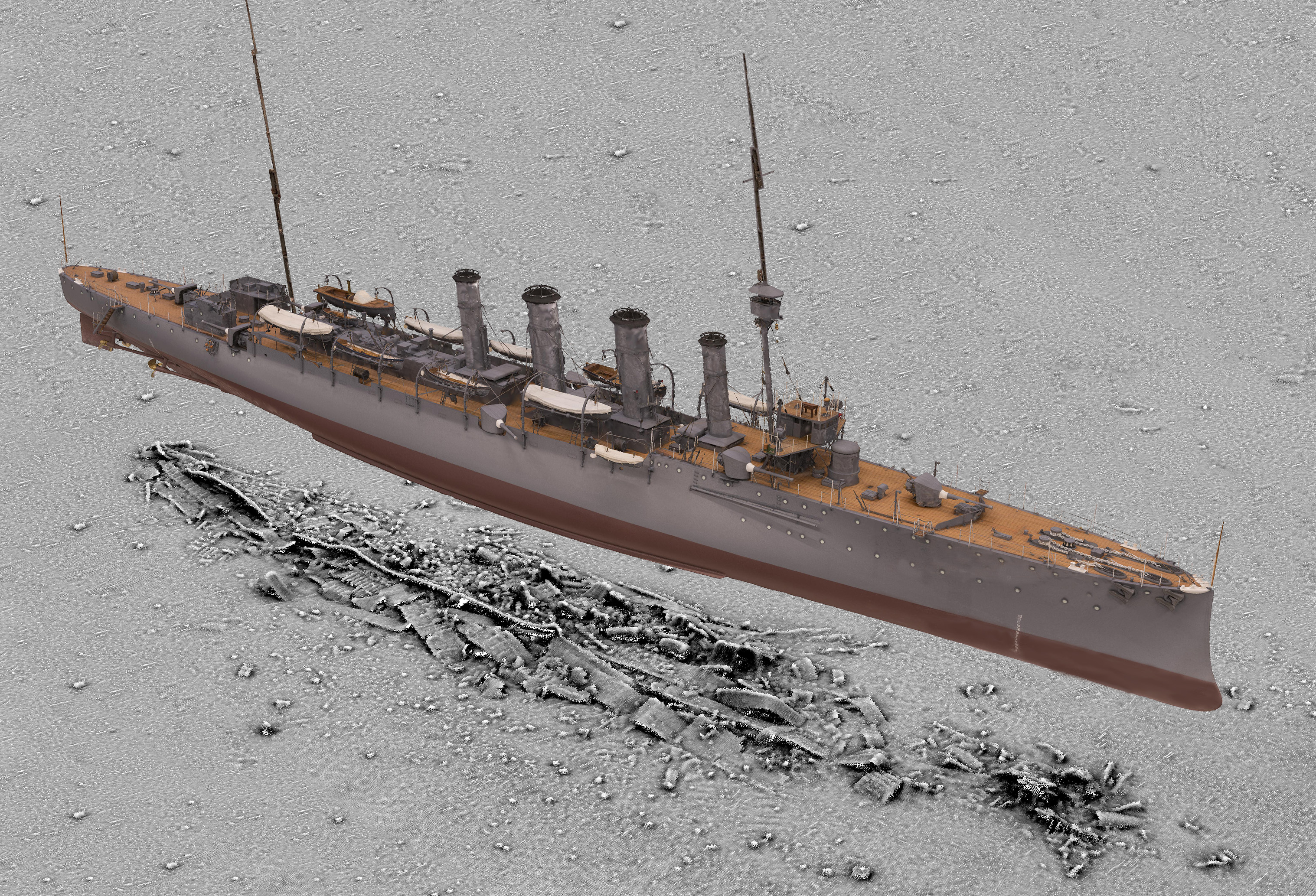Secrets of the Deep – Jutland Wreck Brought to Life
- HMS Falmouth recreated in its final resting place using underwater surveying and digital 3D modelling
- 100 years since First World War Battle of Jutland warship sunk by German U-boats off the Yorkshire Coast on 20 August 1916
To mark the centenary this weekend of the loss of HMS Falmouth Historic England is bringing the warship ‘back to life’. HMS Falmouth is the only substantial wreck of a Royal Navy warship that fought in the Battle of Jutland lying in English waters. Using cutting edge technology and a new survey of the wreck, HMS Falmouth has been recreated in its final resting place off the Yorkshire coast.
New digital 3D model
For the first time, Historic England has produced a digital 3D model of HMS Falmouth and superimposed it on a detailed survey of the wreck. The results of the seabed survey, which was carried out in partnership with the Maritime and Coastguard Agency, have been combined with a digital 3D image of a builder’s model of HMS Falmouth held by the Imperial War Museum at Chatham Historic Dockyard.
A "largely forgotten conflict"
HMS Falmouth was the flagship of the Third Light Cruiser Squadron at the Battle of Jutland, which was the biggest naval engagement of the First World War. Over 100,000 sailors were involved on 250 ships. HMS Falmouth fought at Jutland as part of Vice-Admiral Beatty’s battle cruiser fleet, engaging several German light cruisers and torpedoing the battle cruiser Lützow.
On Sunday 20 August 1916 just a few weeks after Jutland, in a pivotal engagement with the German fleet, HMS Falmouth sank in Bridlington Bay after being struck in two separate torpedo attacks by U-boats. Some 12 crew members lost their lives.
Wayne Cocroft, Senior Investigator at Historic England said: “Throughout the First World War the sea off our coast was an intensely-fought battlefield with many casualties lost within sight of the shore. Aside from war memorials to those lost at sea, the traces of maritime battles are invisible to all but a few. Modern technology is now being used to make our underwater heritage accessible to all. Digital 3D modelling and computer visualisation can recreate the appearance of lost vessels aiding our understanding and remembrance of this largely forgotten conflict."
Archive photographs uncovered
HMS Falmouth’s story is not widely known even though the wreck has been charted for decades, so Historic England commissioned Fjordr Limited to carry out new research into the history and significance of the ship. The new work uncovered personal recollections and photographs as well as collecting together official documents that had been split amongst different archives.
Dr Antony Firth, Director of Fjordr Limited, said: “The wreck of HMS Falmouth is a key feature of the First World War heritage of England’s East Coast and is important for being the only known survivor of all the Town Class light cruisers. As well as being a memorial to those who served and died, it is a reminder of the UK’s industrial and maritime prowess in the early twentieth century.”





